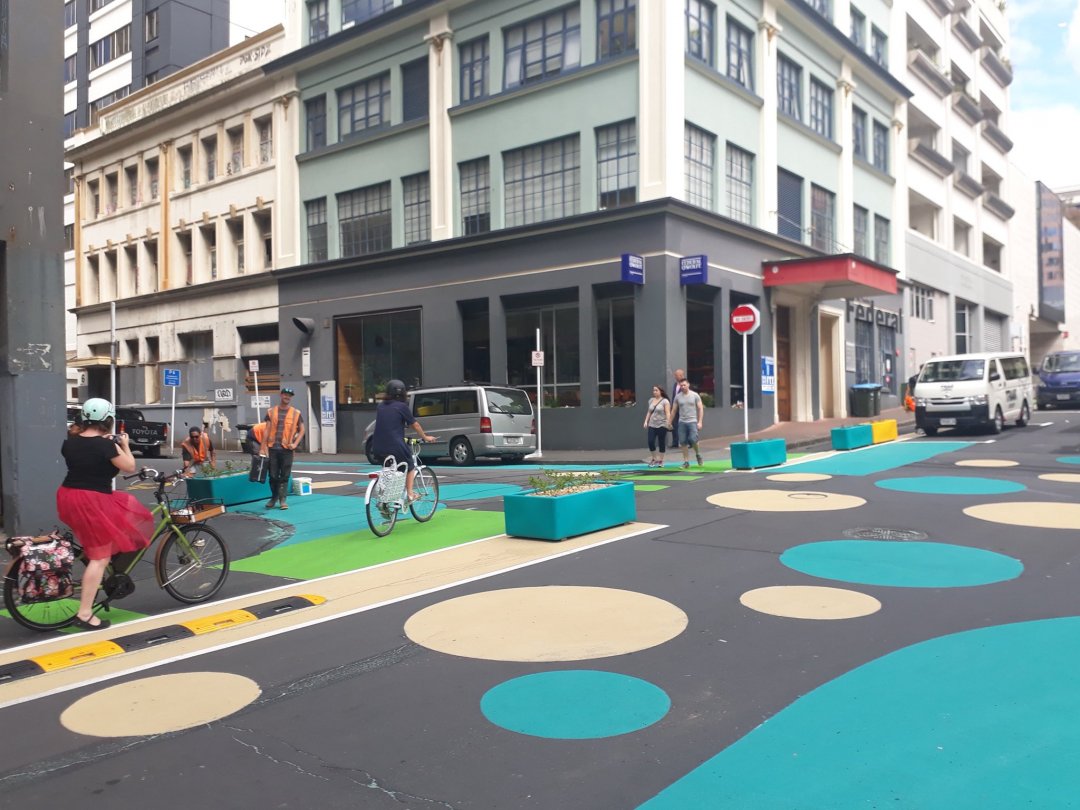What's with the dots? Putting the fun in functional
You might have seen the city's streets coming out in spots lately, first on Shortland Street and more recently on Federal Street. Not just decorative, they’re an example of the growing global trend of tactical urbanism.
We talked to Claire Davis, a specialist urban designer for council's Auckland Design Office, which is working with global leaders in the area - New York's Street Plans Collaborative - to bring "lighter, quicker and cheaper" changes to our local street environment.
She says that the projects are “small-scale actions that speak to a longer term change”. They're a good way to test and trial ideas for more permanent upgrades, a gap-filler to make a space nicer and more accessible for people until that upgrade can happen, and importantly, they can be quickly deployed to create a safer environment if any pedestrian safety issues become apparent.
So the small, quick, cheap tactical urbanism projects and the big, more considered and expensive permanent developments go hand in hand - they're all part of the wider city centre transformation programme.
The section of Federal Street that's just received the dot treatment and a painted south-bound cycle lane is a good example of how tactical urbanism can gap-fill and trial ahead of permanent changes, as it's in line for a full upgrade in years ahead. Among the aims of the upgrade are better pedestrian access through the city and high quality urban design to encourage new business such as retail and restaurants and support a vibrant public environment - and the temporary changes are a good way to trial what does and doesn't work in the space.
So why dots, we asked Claire. “Well, basically, I love polka dots… they’re intrinsically playful and uplifting and informal, and they’re also very eye-catching.” She says that they looked at a range of simple, bold graphics, ruling out the more linear options as there was a chance they could be confused for a pedestrian crossing.
Along with street graphics like the dots, tactical urbanism uses other inexpensive and temporary tools like Placekit, a set of modular planters and seating that can be used to rearrange spaces and define boundaries, and PVC lane separators that are installed on the road.
Claire says that measuring and monitoring is really important when it comes to tactical urbanism. Federal Street is so new that monitoring has just started, but the results are in for the changes made on Shortland Street last year, intended to slow traffic in a spot known as a difficult place to cross for pedestrians.
The dots have meaningfully slowed down the fastest traffic in the area - technically speaking, there's been a 5.4% reduction in the 85th percentile vehicle speed - meaning they’ve had the intended effect. “When drivers and pedestrians are confronted with something different, their reaction is to be a bit confused, but to slow down and to make their way forward more carefully.”
Find out more about these temporary changes to Federal Street and share any feedback here.





